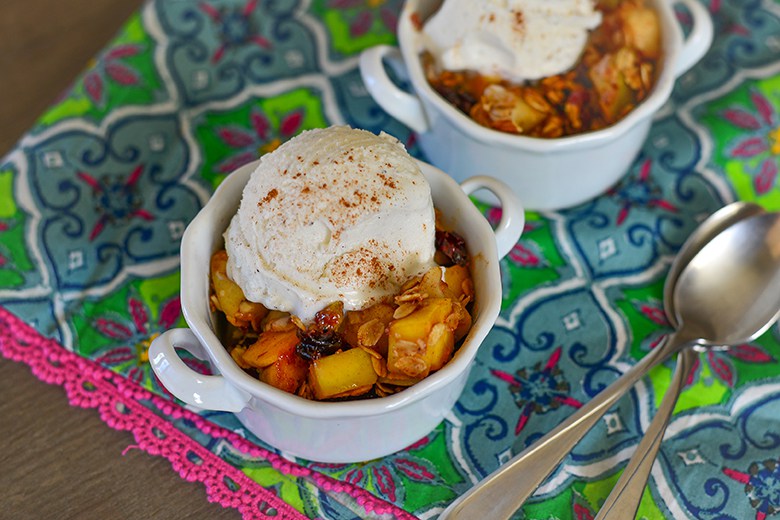
As long as I can remember, the quince tree in my parent’s back yard has produced bunches of fruit every fall. As a child, I’d look out our kitchen window and see the branches of this gnarled tree weighed down by dense, green, knobby fruit coated with grey fuzz. While our neighbors grew tender apricots, savory pecans and sweet blackberries, I wondered why, of all things, we had a quince tree. I asked my mom this question repeatedly over the years and her response was unfailingly consistent: “Your father grew up eating membrillos (quince) and wanted to plant a tree in the yard when we moved into our house.”
My dad grew up in the small northern Mexican town of Magdalena, Sonora, located about 50 miles south of my hometown, Nogales, AZ. Quinces were one of several foods the 17th century Jesuit missionary Father Eusebio Francisco Kino is credited with bringing to this area. His extensive work with the native people living in the harsh desert lands of Baja California, southern Arizona and northern Mexico included helping expand the agricultural diversity by introducing crops such as white Sonoran wheat, pink lentils and quince. To this day, quince trees continue to flourish in these areas. Internationally, quince is commonly grown in Turkey, western Asia, southeastern Europe and parts of Latin America, including Chile.
Out of the 15 varieties that exist, some quinces are strictly ornamental, but the common variety, Cydonia oblonga, becomes softer and less bitter when allowed to fully ripen on the tree. Though not as popular or attractive as its botanical cousins pears and apples, quince has a remarkably high pectin content that makes it ideal for jams, jellies and marmalades.
I’ve always eaten quince raw with a splash of fresh lime juice and a sprinkle of salt and chili powder. I’ve also tried empanadas de membrillo, where the fruit is cooked into a sweet, think jelly (ate de membrillo) and encased in a dough made with shortening or butter. In an effort to make a light and healthy dessert, I came up with a Quince and Apple Skillet Crisp recipe. I’ve paired quince with crisp apples and heightened the sweetness with a little brown sugar and dried cranberries and cherries. Seasoning and simmering the fruits, then adding my favorite granola and a scoop of ice cream is a perfect way to incorporate the humble quince into a fun and flavorful recipe. 
Quince and Apple Skillet Crisp
Makes 8 ½-cup servings
Ingredients
- 2 tablespoons apple juice
- 1 tablespoon cornstarch
- ¾ cup honey crisp apple, cored, peeled and diced into ¼-inch cubes (about 1 apple)
- ¾ cup Granny Smith apple, cored, peeled and diced into ¼-inch cubes (about 1 apple)
- ¾ cup quince, diced into ¼ inch cubes (about 1 to 2 quince)
- 2 tablespoons light brown sugar
- ½ teaspoon cinnamon
- ¼ teaspoon lemon juice
- 2 teaspoons canola oil
- ¼ cup dried cranberries
- ¼ cup dried cherries
- 1 cup prepared granola
- 2 cups slow churned vanilla ice cream
Directions
- In a small bowl, combine apple juice and cornstarch.
- In a medium bowl, combine diced apples, quince, brown sugar, cinnamon and lemon juice, then pour cornstarch slurry over it and stir to combine.
- Add oil to a large nonstick skillet over medium heat.
- Add apple mixture to the skillet, spreading evenly over the bottom of the pan. Cook, stirring constantly, until browned but not mushy, around 5 minutes.
- Add cranberries and cherries. Stir to combine and heat through.
- Add granola to fruit mixture and reduce heat to low.
- Flatten fruit and granola mixture with the back of a wooden spoon, cover with lid and cook for an additional 1 to 2 minutes.
- Serve immediately topped with ice cream. Dust with cinnamon, if desired.








